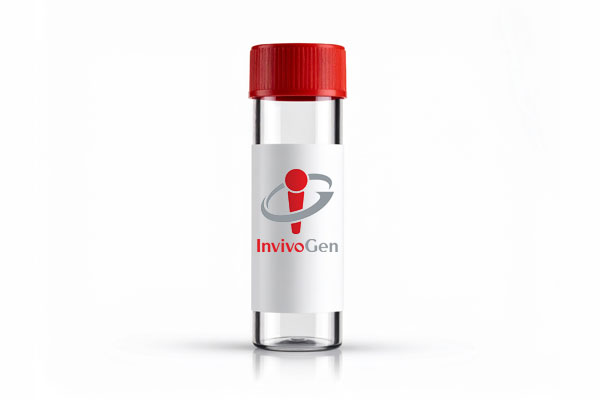Viral infections induce a strong innate immune response characterized by the rapid production of type I interferons (IFN α/β) leading to the inhibition of virus replication.
This antiviral response is initiated through the recognition of viral products, such as double-stranded RNA (dsRNA), by two types of pathogen recognition receptors (PRRs): the Toll-like receptors (TLRs) and the RIG-I-like receptors (RLRs).
The TLR family consists of more than 10 members expressed on the cell surface membrane or endosomes. The RLRs is a family of cytoplasmic RNA helicases that includes RIG-I and MDA-5 [1].
Double-stranded RNA, which is synthesized during the replication of many viruses, is recognized by TLR3 and RIG-I/MDA-5 in a cell-type- and pathogen-type-specific manner.
Studies of RIG-I- and MDA-5-deficient mice have revealed that conventional dendritic cells (DCs), macrophages and fibroblasts isolated from these mice have impaired IFN induction after RNA virus infection, while production of IFN is still observed in plasmacytoid DCs (pDCs) [2]. The TLR system is required for pDCs to induce the antiviral response but is dispensable for cDCs, macrophages and fibroblasts. For these cell types, RLRs are critical to sense viruses.
RLRs pathway
RIG-I and MDA-5 contain a DExD/H box RNA helicase and two caspase recruiting domain (CARD)-like domains. The helicase domain interacts with dsRNA, whereas the CARD domains are required to relay the signal. Despite the overall structural similarity between these two sensors, they detect distinct viral species.
RIG-I participates in the recognition of Paramyxoviruses (Newcastle disease virus (NDV), Sendai virus (SeV)), Rhabdoviruses (vesicular stomatitis virus (VSV)), Flaviviruses (hepatitis C (HCV)) and Orthomyxoviruses (Influenza), whereas MDA-5 is essential for the recognition of Picornaviruses (encephalomyocarditis virus (EMCV)) and poly(I:C), a synthetic analog of viral dsRNA[1].
Notably, RIG-I binds specifically to RNA containing 5’-triphosphate such as viral RNA and in vitro transcribed long dsRNA[3]. Mammalian RNA is either capped or contains base modifications suggesting that RIG-I is able to discriminate between self and non-self RNA.
RIG-I/MDA-5 and TLR3 signaling pathways differ
Although they recognize dsRNA, RIG-I/MDA-5 and TLR3 differ in their downstream signaling pathways.
TLR3 recruits the adapter protein TRIF leading to the activation of several transcription factors including IRF3 and NF-κB [4]. IRF3 controls the expression of type I IFNs, while NF-κB regulates the production of inflammatory cytokines.
RIG-I and MDA-5 bind to the CARD containing adaptor protein IPS-1 (also known as MAVS, CARDIF or VISA), which activates IRF3 and IRF7 through TRAF3, NAP1 and TBK1/IKKε [5-7]. IPS-1 interacts also with FADD, a death domain-containing adapter involved in death receptor signaling, and RIP1 which induces the activation of the NF-κB pathway [5-8].
LGP2, a third RLR
A third RLR has been described: laboratory of genetics and physiology 2 (LGP2). LGP2 contains a RNA binding domain but since it lacks the CARD domains acts as a negative feedback regulator of RIG-I and MDA-5.
LGP2 appears to exert this activity at multiple levels by i) competitively sequestering dsRNA, ii) forming a protein complex with IPS-1, and/or iii) binding directly to RIG-I through a repressor domain [9-11].
LGP2 is not the only molecule involved in the negative control of dsRNA-induced IFN production. Various endogenous and viral inhibitors appear to target the RIG-I/MDA-5 pathway.
References:
1. Kawai T. & Akira S., 2007. J Biochem. 141:137-145.
2. Kato H., Sato S. et al., 2005. Immunity 23:19-28.
3. Pichlmair A., Schulz O. et al., 2006. Science 314:997-1001.
4. Yamamoto M., Sato S. et al., 2003. Science. 301:640-643.
5. Kawai T., Takahashi K. et al., 2005. Nat Immunol. 6:981-988.
6. Saha SK., Pietras EM. et al., 2006. Embo J. 25:3257-3263.
7. Sasa M., Shingai M. et al., 2006. J Immunol. 177:8676-8683.
8. Takahashi K., Kawai T. et al., 2006. J Immunol. 176:4520-4524
9. Yoneyama M., Kikuchi M. et al., 2005. J Immunol. 175:2851-58
10. Komuro A. & Horvath CM. et al., 2006. J Virol. 80(24): 12332-12342
11. Saito T., Hirai R. et al., 2007. PNAS. 104(2):582-587.



